122 + 332 = 1233
882 + 332 = 8833
94122 + 23532 = 94122353
741602 + 437762 = 7416043776
8832122 + 3211682 = 883212321168
Author: Greg Ross
East Meets West
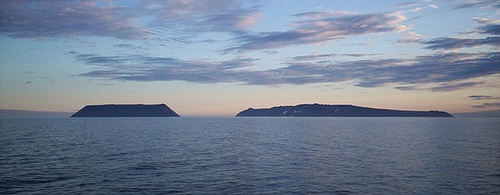
The Diomede Islands of the Bering Strait are a world apart, though only 2.4 miles separate them. Little Diomede belongs to the United States, Big Diomede to Russia, and the international date line runs between them.
So when Lynne Cox swam between them in 1987, she set a peculiar endurance record: Though the waters were cold enough to kill an average swimmer in 30 minutes, she departed “Yesterday Isle” at 1 p.m. on a Friday … and arrived safely on Tomorrow Island on Saturday.
Unquote
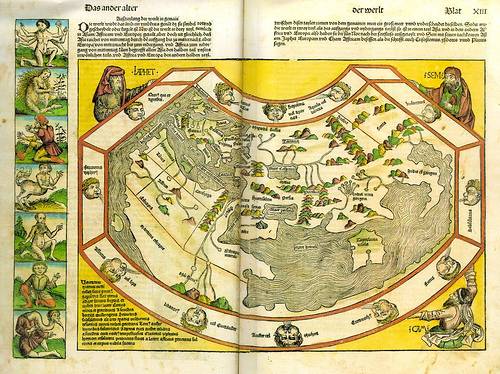
“The greatest obstacle to discovering the shape of the earth, the continents and the ocean was not ignorance but the illusion of knowledge.” — Daniel Boorstin
“Mysterious Markings”
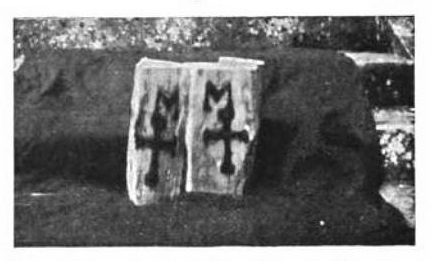
The workmen on my father’s estate were cutting up some fallen timber in the park, when, on splitting open a certain beech tree, a peculiar marking in the form of a cross, with an ‘M’ above, was discovered in the centre of it. The whole measures about twelve inches by six, and is very clearly marked, as the accompanying photograph shows.
No one has any explanation to offer as to how these marks came. Perhaps some of your readers could do so. In the photograph the two moieties are displayed side by side. — Miss Rosemary E. Greville-Nugent, Clonyn Castle, Delvin, Co. Westmeath, Ireland.
— Strand, July 1908
Misc
- 2737 = (2 × 7)3 – 7
- Move the C in CABARET and you get A BAR, ETC.
- Van Gogh sold only one painting in his lifetime.
- “He who hesitates is last.” — Mae West
- If a man is convinced he has hypochondria, is he a hypochondriac?
(Thanks, Ben.)
A Shakespearean Sub
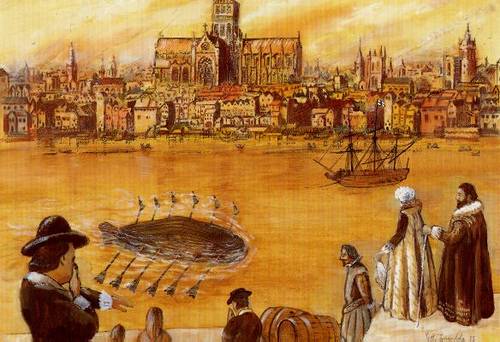
The first navigable submarine appeared in 1620. Dutch inventor Cornelius Drebbel covered a wooden frame with greased leather to make a watertight, steerable craft for the Royal Navy; within four years he’d produced an “invisible eel” large enough to accommodate 12 oarsmen and remain 15 feet underwater for three hours. It’s said he even took James I on a test dive in the Thames, making him the first monarch to travel underwater.
It’s not clear how Drebbel avoided carbon dioxide buildup. An acquaintance of Robert Boyle who had sailed on the sub said the inventor produced a “chemical liquor” that would “cherish the vital flame residing in the heart.” Possibly he had found a way to produce oxygen gas by heating nitre.
Drebbel’s sub never saw action, but it was centuries ahead of its time. As late as 1901 H.G. Wells wrote, “I must confess that my imagination, in spite even of spurring, refuses to see any sort of submarine doing anything but suffocate its crew and founder at sea.”
In a Word
unbe
v. to cause not to be
The Multiplier
A 1784 letter from Ben Franklin to Benjamin Webb, an American in France who had applied for his aid:
Dear Sir,
I received yours of the 15th Instant, and the Memorial it inclosed. The account they give of your situation grieves me. I send you herewith a Bill for Ten Louis d’ors. I do not pretend to give such a Sum; I only lend it to you. When you shall return to your Country with a good Character, you cannot fail of getting into some Business, that will in time enable you to pay all your Debts. In that Case, when you meet with another honest Man in similar Distress, you must pay me by lending this Sum to him; enjoining him to discharge the Debt by a like operation, when he shall be able, and shall meet with another opportunity. I hope it may thus go thro’ many hands, before it meets with a Knave that will stop its Progress. This is a trick of mine for doing a deal of good with a little money. I am not rich enough to afford much in good works, and so am obliged to be cunning and make the most of a little. With best wishes for the success of your Memorial, and your future prosperity, I am, dear Sir, your most obedient servant,
B. Franklin.
Fiction and Fact
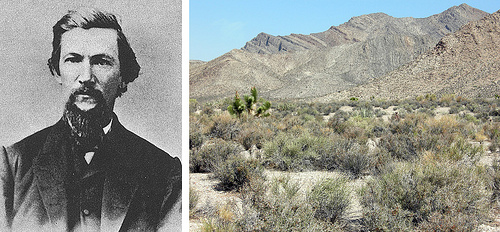
Journalist Dan De Quille meant only harmless fun with his 1865 story “The Traveling Stones of Pahranagat Valley,” a tale of mysteriously moving stones in the Nevada desert. When placed on a level surface, he had written, the strange stones would move toward a common center and form a clutch, “like a lot of eggs in a nest.”
Reportedly the account caused a furor among German scientists, and P.T. Barnum offered De Quille $10,000 for a set of the strange stones. He put them off, but the legend spread. In response to an 1871 inquiry, he wrote, “We have none of said rolling stones in this city at present but would refer our Colorado speculator to Mark Twain, who probably still has on hand fifteen or twenty bushels of assorted sizes.” (Twain and De Quille had been roommates at Virginia City.)
Still the inquiries came. Finally, seven years later, De Quille learned his lesson and confessed. “We are now growing old, and we want peace. We desire to throw up the sponge and acknowledge the corn; therefore we solemnly affirm that we never heard of any such diabolical cobbles as the traveling stones of Pahranagat — though we still think there ought to be something of the kind somewhere in the world.”
Ironically, less than 200 miles away, there were.
Time Well Spent
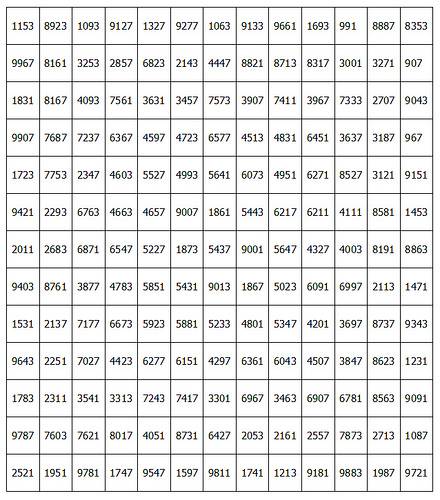
The Journal of Recreational Mathematics published this remarkable magic square, composed by “a puzzlist who at the time was a prison inmate.”
The large 13 × 13 square is magic — that is, each row and column adds to the same sum — but so is each successive nested square, from 11 × 11 down to 3 × 3.
The magic constant of each square is 10,874 smaller than the last.
And every cell is prime.
